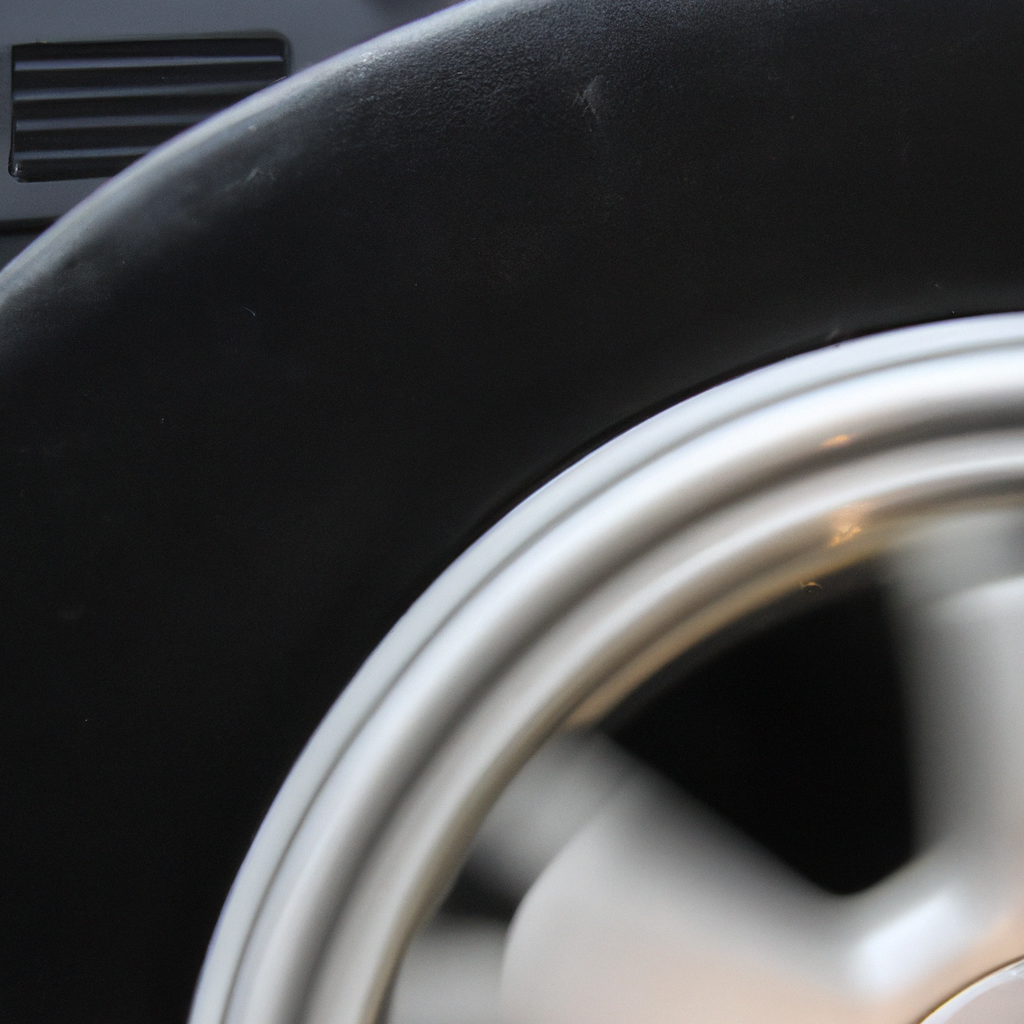Imagine cruising down the road, enjoying the breeze and the smooth drive, when suddenly you feel a strange vibration running through your hands as you grip the steering wheel. It’s unexpected, disconcerting even, and you find yourself wondering what could be causing this unsettling sensation. Well, fear not, as we are here to shed some light on this puzzling situation. In this article, we will explore the possibility of unbalanced tires being the culprit behind steering vibrations and uncover the connection between these two seemingly unrelated elements. So, fasten your seatbelt, as we embark on a journey to discover the truth behind the mysteries of steering vibrations caused by unbalanced tires.

What Causes Steering Vibration?
Tire Balancing
One of the main causes of steering vibration is tire balancing. When the tires are not properly balanced, it can lead to an uneven distribution of weight around the wheel. This imbalance can result in vibration when the vehicle is in motion.
Wheel Alignment
Another possible cause of steering vibration is wheel alignment issues. When the wheels are not properly aligned, it can create a misalignment between the tires and the steering system. This misalignment can cause the steering wheel to vibrate while driving.
Suspension Issues
Steering vibration can also be caused by suspension issues. If there are problems with the suspension system, such as worn-out components or damaged shocks, it can affect the stability of the vehicle and lead to steering vibration.
Brake Problems
Faulty brakes can also contribute to steering vibration. When the brakes are worn out or need adjustment, it can cause the steering wheel to shake or vibrate when the brakes are applied.
Worn Steering Components
Lastly, worn steering components can play a role in steering vibration. If the steering system is worn out, it can impact the smoothness of the steering mechanism and result in vibrations while driving.
Understanding Tire Balancing
Definition of Tire Balancing
Tire balancing is the process of equalizing the weight distribution of a tire and wheel assembly. This is achieved by adding weights to the rim of the wheel to counterbalance any heavy spots.
Purpose of Tire Balancing
The purpose of tire balancing is to ensure that the weight is evenly distributed around the wheel assembly. This helps to eliminate any imbalance that could lead to steering vibration.
How Tire Balancing Works
Tire balancing is typically done using a balancing machine. The wheel and tire assembly is placed on the machine, which then spins the tire to determine any heavy spots. The machine then indicates where weights should be added to balance the tire.
Signs of Unbalanced Tires
There are several signs that indicate your tires may be unbalanced. Some common signs include steering wheel vibration, uneven tire wear, reduced traction, and increased stress on the suspension system.
Effects of Unbalanced Tires
Vibration at Different Speeds
One of the most noticeable effects of unbalanced tires is steering wheel vibration at different speeds. This vibration may become more pronounced as the vehicle accelerates or decelerates.
Uneven Tire Wear
Unbalanced tires can also cause uneven tire wear. The areas of the tire that are experiencing more weight due to the imbalance will wear out faster than the rest of the tire. This can result in the need for premature tire replacement.
Reduced Traction
Unbalanced tires can reduce the overall traction of the vehicle. This can be particularly dangerous in wet or slippery conditions, as the tires may not be gripping the road surface as effectively.
Increased Stress on Suspension
When tires are unbalanced, it puts additional stress on the suspension system. This can cause the suspension components to wear out faster and potentially lead to more severe issues if left unaddressed.
Unbalanced Tires and Steering
The Connection Between Infrequent Tire Balancing and Steering Vibrations
When tire balancing is not performed regularly, it increases the likelihood of experiencing steering vibrations due to unbalanced tires. It is important to have your tires balanced at regular intervals to maintain optimal performance.
Symptoms of Steering Vibration Caused by Unbalanced Tires
If you are experiencing steering vibrations, it may be a result of unbalanced tires. Common symptoms include a vibrating steering wheel, vibrating seats, and a noticeable shake throughout the vehicle.
Potential Safety Concerns
Steering vibrations caused by unbalanced tires can pose safety concerns. The vibrations can affect your ability to maintain control of the vehicle, especially at higher speeds. It is essential to address any steering vibrations promptly to ensure safe driving conditions.

Testing and Diagnosis
Basic Visual Inspection
Performing a basic visual inspection of your tires can provide some insight into whether they are unbalanced. Look for any signs of uneven wear or bulging in the tire sidewalls.
Road Test
Taking your vehicle for a road test can also help diagnose steering vibrations caused by unbalanced tires. Pay close attention to how the steering wheel feels during acceleration, braking, and at different speeds.
Using a Tire Balancer
A tire balancer is a tool that can accurately determine the balance of your tires. These machines spin the tire and identify any heavy spots, indicating where weights should be added to achieve optimal balance.
Professional Evaluation
If you are unsure about the cause of steering vibrations, it is recommended to seek professional evaluation. An experienced mechanic can thoroughly inspect your tires, suspension system, and steering components to identify the root cause of the vibrations.
Preventing and Correcting Steering Vibrations
Regular Tire Balancing
To prevent steering vibrations caused by unbalanced tires, it is essential to have your tires balanced regularly. Most manufacturers recommend balancing your tires every 6,000 to 8,000 miles or as recommended in your vehicle’s owner manual.
Routine Wheel Alignments
In addition to tire balancing, routine wheel alignments are crucial for proper vehicle handling and to minimize steering vibrations. Wheel alignments ensure that the wheels are properly aligned with each other and the vehicle’s specifications.
Fixing Suspension Issues
If steering vibrations persist despite proper tire balancing and wheel alignments, it is important to address any suspension issues. Worn-out components, damaged shocks, or other suspension problems can contribute to steering vibrations.
Addressing Brake Problems
If you suspect that brake problems are causing steering vibrations, it is vital to address them promptly. Have your brakes inspected and serviced regularly to ensure proper functioning and minimize any potential steering issues.
Replacing Worn Steering Components
If the steering component is worn out, it may contribute to steering vibrations. Components such as tie rod ends, ball joints, or steering rack may need to be replaced to restore optimal steering performance.

Professional Tire Balancing
Benefits of Professional Tire Balancing
Opting for professional tire balancing offers several benefits. Professionals have the expertise and specialized equipment to accurately balance your tires, ensuring optimal performance and reducing the risk of steering vibrations.
When to Seek Professional Help
If you are unsure of how to properly balance your tires or if you have not had your tires balanced in a while, it is recommended to seek professional help. Professionals can assess your tires accurately and provide the necessary adjustments.
Cost of Professional Balancing
The cost of professional tire balancing can vary depending on various factors such as location, the number of tires needing balancing, and any additional services required. However, the cost is generally reasonable and worth the investment for smoother driving and increased safety.
DIY Tire Balancing
Tools You Will Need
To perform tire balancing at home, you will need a few tools: a jack, jack stands, a lug wrench, a bubble balancer or electronic balancer, and wheel weights.
Step-by-Step Instructions
- Safely lift the vehicle using a jack and securely support it with jack stands.
- Loosen the lug nuts and remove the wheel from the vehicle.
- Use a bubble balancer or electronic balancer to determine the heavy spots of the tire.
- Attach wheel weights to the rim at the indicated positions.
- Reinstall the wheel onto the vehicle and tighten the lug nuts.
- Lower the vehicle and repeat the process for each tire.
Safety Precautions
When performing tire balancing at home, it is crucial to follow safety precautions. Always work on a level surface, use proper jack stands to support the vehicle, and ensure that the lug nuts are properly tightened to avoid any accidents while driving.

Common Misconceptions
Belief That Steering Vibrations Are Always Caused by Tire Balance
While tire balance is a common cause of steering vibrations, it is not the sole culprit. Other factors such as wheel alignment, suspension issues, brake problems, or worn steering components can also contribute to steering vibrations.
Belief That New Tires Do Not Require Balancing
Contrary to popular belief, new tires are not always perfectly balanced. The manufacturing process can result in slight imbalances, making tire balancing necessary even for new tires. It is essential to have your new tires balanced to ensure optimal performance.
Neglecting Proper Tire Rotation and Balancing
Neglecting regular tire rotation and balancing can lead to uneven wear and contribute to steering vibrations. Regularly rotating and balancing your tires helps to equalize tread wear and prolong the lifespan of your tires.
Conclusion
Steering vibration can be a frustrating and potentially dangerous issue. Unbalanced tires are a common culprit, but other factors such as wheel alignment, suspension issues, brake problems, or worn steering components can also contribute to steering vibrations. Regular tire balancing, routine wheel alignments, and addressing other potential issues are essential for maintaining optimal steering performance and minimizing steering vibrations. Proper maintenance and attention to your vehicle’s tires and steering system will ensure a smoother and safer driving experience.


